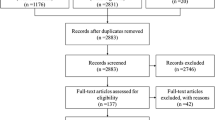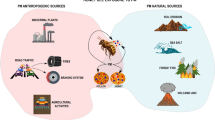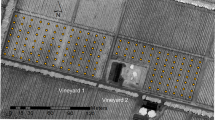Abstract
The occurrence of pollen grains in the atmosphere markedly relates to meteorological factors. In the study we have evaluated a correlation between the concentration of pollen grains in the atmosphere of Bratislava and temperature, relative humidity and rainfall during the vegetation period of 1995 and 1997. For our analysis we have selected one representative of each phytoallergen group (trees, grasses, weeds). We have chosen the Betula genus of trees, the whole Poaceae family of grasses and ragweed Ambrosia artemisiifolia L. to represent weeds. The taxons mentioned represent the most significant allergens in Slovakia. The concentration of pollen grains has been monitored by a Lanzoni volumetric pollen trap. The data obtained, the average daily concentration in 1 m3, have been included in the statistical analysis together with values for the average daily temperature, relative humidity and total rainfall in 24 h. The correlation between the concentration of pollen grains in the atmosphere and selected meteorological variables from daily monitoring has been studied with the help of linear regression and correlation coefficients. We have found the average daily temperature and relative humidity (less than temperature) to be significant factors influencing the occurrence of pollen grains in the atmosphere of Bratislava. The total daily rainfall does not seem to be significant from the statistical point of view.




Similar content being viewed by others
References
Barnes Ch, Pacheco F, Landuyt J, Hu F, Portnoy J (2001) The effect of temperature, relative humidity and rainfall on airborne ragweed pollen concentrations. Aerobiologia 17:61–68
D'Amato G, Spieksma FTM (1990) Allergenic pollen in Europe. Grana 30:67–70
D'Amato G, Spieksma FTM (1992) European allergenic pollen types. Aerobiologia 8:447–450
Erdtman G (1969) Handbook of palynology. Morphology – taxonomy – ecology. Munksgaard Copenhagen
Eriksson NE, Wihl JÅ, Arrendal H, Strandhede SO (1984) Tree pollen allergy. II. Sensitization to various tree pollen allergens in Sweden. A multi-centre study. Allergy 39:610–617
Eriksson NE, Wihl JÅ, Arrendal H, Strandhede SO (1987) The pollen allergy III. Cross reactions based on results from skin prick tests and RAST in hay fever patients. A multi-centre study. Allergy 42:205–214
Galán C, Emberlin J, Domínguez E, Bryant RH, Villamandos F (1995) A comparative analysis of daily variations in the Gramineae pollen counts at Córdoba, Spain and London, UK. Grana 34:189–198
Hrubiško M (1996) Oversensitivity on pollen of trees, grasses and weeds in Bratislava. PhD thesis LF UK Bratislava
Jäger S, Spieksma FTM, Nolard N (1991) Fluctuations and trends in airborne concentrations of some abundant pollen types, monitored at Vienna, Leiden and Brussels. Grana 30:309–312
Jurko A (1990) Ecological and sociological evaluation of the vegetation. Príroda, Bratislava
Lux A, Erdelská O (1998) Practical on anatomy and embryology of plants. UK Bratislava
Oei HD, Spieksma FTM, Bruynzeel LB (1986) Birch pollen asthma in the Netherlands. Allergy 41:435–441
Rogers BL, Bond JF, Morgenstern JP, Counsell CM, Griffith IJ (1996) Immunological characterization of the major ragweed allergens Amb a I and Amb a II. In: Mohaparta SS, Knox RB (eds) Pollen biotechnology: gene expression and allergen characterization. Chapman & Hall, New York, pp 211–225
Rybníček O, Jäger S (2001) Ambrosia (Ragweed) in Europe. ACI Int 13:60–66
Stanley RG, Linskens HF (1974) Pollen, biology, biochemistry and management. Springer, Berlin Heidelberg New York
Welten M, Sutter HCR (1982) Atlas de distribution des ptéridophytes et phanérogames de la Suisse, Vol. 1. Birkhäuser, Basel
Zawisza E, Samolińska-Zawisza U (1991) Airborne pollen survey of the Warsaw area. Grana 30:177–179
Zlinská J (1995) A role of pollen information services for public. Okresný úrad životného prostredia. Trnava:10–16
Acknowledgements
The author would like to thank the staff of the Slovak Hydrometeorological Institute (SHMU) for their collaboration. The experiments comply with the current laws of the Slovak Republic in which the experiments were performed.
Author information
Authors and Affiliations
Corresponding author
Rights and permissions
About this article
Cite this article
Bartková-Ščevková, J. The influence of temperature, relative humidity and rainfall on the occurrence of pollen allergens (Betula, Poaceae, Ambrosia artemisiifolia) in the atmosphere of Bratislava (Slovakia). Int J Biometeorol 48, 1–5 (2003). https://doi.org/10.1007/s00484-003-0166-2
Received:
Revised:
Accepted:
Published:
Issue Date:
DOI: https://doi.org/10.1007/s00484-003-0166-2




